Providing heat to the entire house with one small device: how to choose a wall-mounted gas boiler?
You are viewing the section Wall mounted, located in the large section Gas.

A wall-mounted gas boiler is a heating unit that acts as a the central element of the liquid heating system.
The technical characteristics of these devices allow them to be used both for heating apartments in multi-apartment buildings and for providing heat in private cottages.
Types of wall-mounted gas boilers
Model range similar units quite wide, the following types of structures are distinguished:
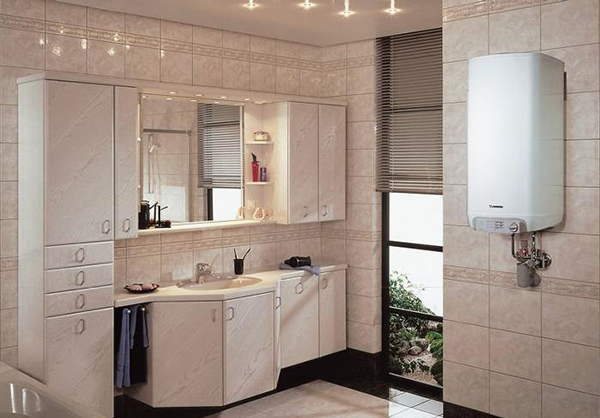
Photo 1. A single-circuit wall-mounted gas boiler is mounted on tiles in a spacious bathroom.
- convection (classical);
- condensation;
- single-circuit;
- double-circuit.
Important! Double-circuit wall-mounted boilers, in addition to heating rooms, provide hot water supply or operation "warm floor" systems.
Appearance and features
The wall-mounted gas boiler is a comparatively compact unit, which, as the name suggests, is attached to the wall.
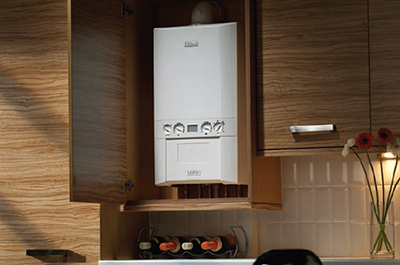
In addition to the installation method and compact dimensions, wall-mounted boilers differ from floor-standing models in the following indicator: maximum power, not exceeding 40 kW.
At the same time, this characteristic allows for the efficient operation of the heating system for areas up to 200 m2.
For heating large spaces, they are usually used floor standing gas boilers.
Device
The appearance and design of the unit depends on characteristics of a specific model, while all wall-mounted devices have a similar design (except for the size and mounting method) to their floor-mounted counterparts. Basic elements wall-mounted boilers are the same.
Combustion chamber
The air-gas mixture is fed into the combustion chamber and ignited. This releases energy that is used to heat the coolant. Modern models of wall-mounted boilers equipped with modulating burners, allowing you to regulate the flame strength and, accordingly, maintain the temperature at a given level.
Heat exchanger
The element of the device design responsible for the distribution of the generated thermal energy, i.e. directly for heating the coolant. For their production, copper or stainless steel.
Heat exchangers made of copper have better thermal conductivity and efficiency, while stainless steel products are stronger and less susceptible to corrosion.
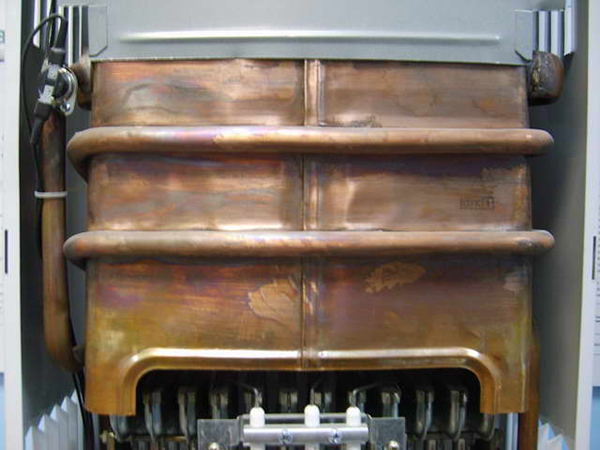
Photo 2. The copper heat exchanger of the wall-mounted gas boiler has good efficiency and thermal conductivity.
Condensing models are equipped with two heat exchangers.: the primary one uses the energy obtained from burning gas to heat the coolant, the secondary one is responsible for transferring the heat released during condensation of combustion products.
Circulation pump and expansion tank
The pump is responsible for the circulation of the coolant in the heating circuit. The number of installed circulation pumps varies - more powerful boiler models often equipped with an additional pump.
The expansion tank is a sealed container that receives excess liquid resulting from thermal expansion of the coolant. This element allows stabilize the pressure in the heating circuit.
Automation and protection means
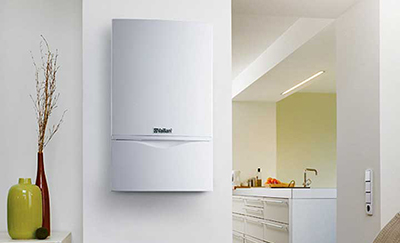
All wall-mounted boilers are more or less automated, which allows maintaining a stable temperature in the heated rooms and ensure the safety of the heating system generally.
Automation means for wall units are complex of electronic devices, reacting to changes in various indicators of the heating system (as well as its individual elements) and controlling the operation of the device in accordance with the specified settings.
All certified models are equipped with protection system, which automatically stops operation when the power goes out or in other potentially dangerous situations. In addition, the boilers are equipped with measuring and control devices that allow manual control.
Important! According to statistics, built-in automation tools (in particular, the self-diagnostic system) detect up to 90% cases malfunctions wall-mounted boilers. If any malfunctions are detected, all information about the nature of the deviations is displayed on the unit's display.
Advantages and disadvantages
Among the indisputable advantages wall-mounted boilers are divided into:
- CompactnessThe devices do not take up much space and are suitable for placement in limited space conditions.
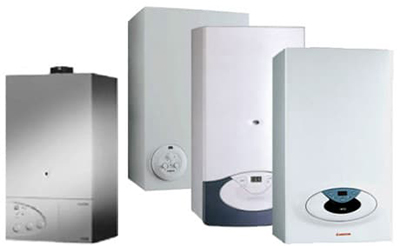
- Versatility. Most models operate on both main and liquefied gas, which is important in conditions of unstable gas pipeline operation.
Switching the fuel mode is accomplished by simply changing the nozzle in the burner.
- Light weight allows you to install the unit on almost any wall.
- Relatively low costWall-mounted boilers are cheaper than floor-standing models.
Among the main ones disadvantages wall-mounted boilers are divided into:
- Limited power. The maximum power of the units does not exceed 40 kW.
- Speed of heating hot water in dual-circuit models it is lower compared to floor-standing boilers. In addition, due to the limited power when using the DHW circuit, the air temperature in the heated rooms decreases.
- Sensitivity to coolant quality. For wall-mounted boilers, it is allowed to use only a pre-prepared heat carrier with a minimum oxygen content. Otherwise, a layer of scale will form on the heat exchanger in a short time, significantly reducing the efficiency of the device. This disadvantage is leveled by installing a special filter.
- Need for frequent maintenance. Due to the design features of wall-mounted gas boilers, timely maintenance is required. Ignoring this circumstance is fraught with rapid failure of the unit.
- Shorter service life compared to floor models. Even if all recommendations specified in the documentation for the device are followed, the service life of any wall-mounted boiler is shorter than that of its floor-standing counterparts.
Requirements for the premises and the choice of the boiler
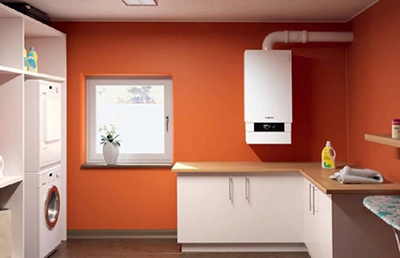
The main requirements for the room in which it is planned to install a wall-mounted gas boiler:
- square - not less than 4 m2, ceiling height – not less than 2.5 m, the width of the doorway is not less than 0.8 m;
- presence of a window – the permissible area of the window opening is calculated from the ratio 0.3 m2 window area to 10 m3 volume of the room;
- plastered walls, absence in finishing elements flammable parts;
- presence of a chimney, the diameter of which corresponds to the indicator given in the documentation for the boiler;
- presence in the premises pipelines with cold water, ventilation and electricity;
- room air temperature – from 5 °C to 35 °C.
Attention! In accordance with current regulations regarding the operation of gas equipment, a wall-mounted boiler is strictly prohibited It is prohibited to install in corridors, rooms without ventilation or a window with a transom, as well as in living quarters, bathrooms and toilets.
Useful video
From the video you can learn the characteristics of single- and double-circuit wall-mounted boilers, recommendations for their selection.
Optimal choice
The choice of one model or another depends on the planned operating conditions, as well as on the personal preferences and financial capabilities of the owner. A comprehensive analysis of these factors will allow you to make the best choice, fully revealing all the advantages and leveling out the disadvantages inherent in wall-mounted gas boilers.





Comments